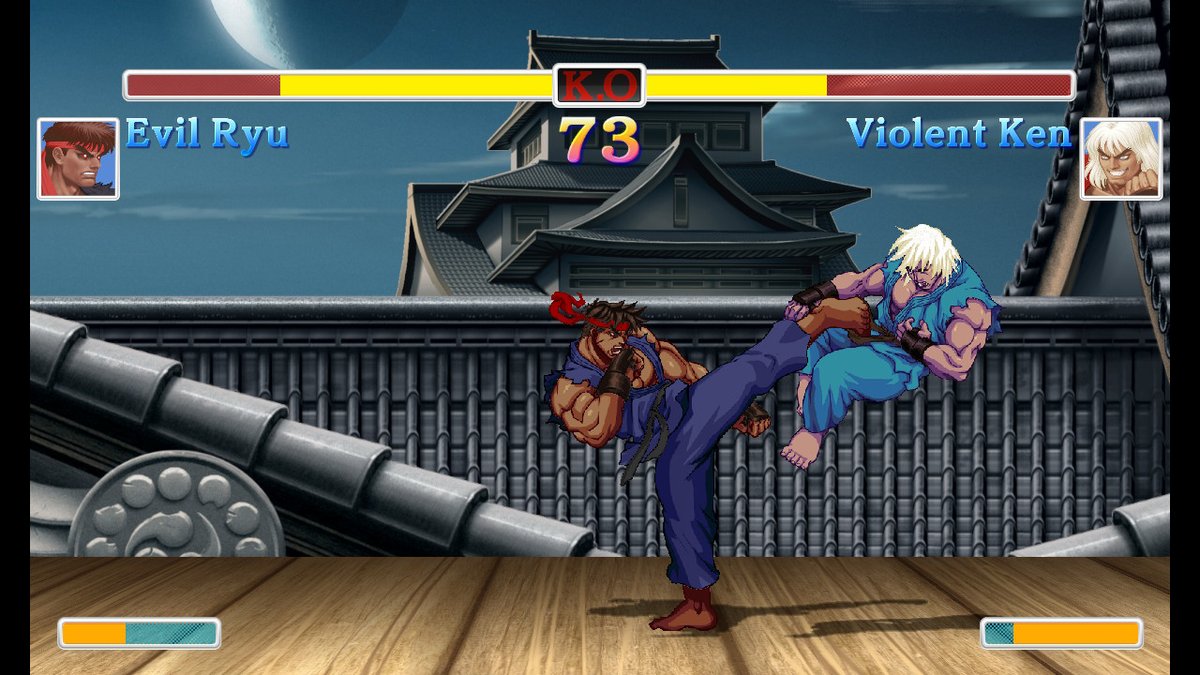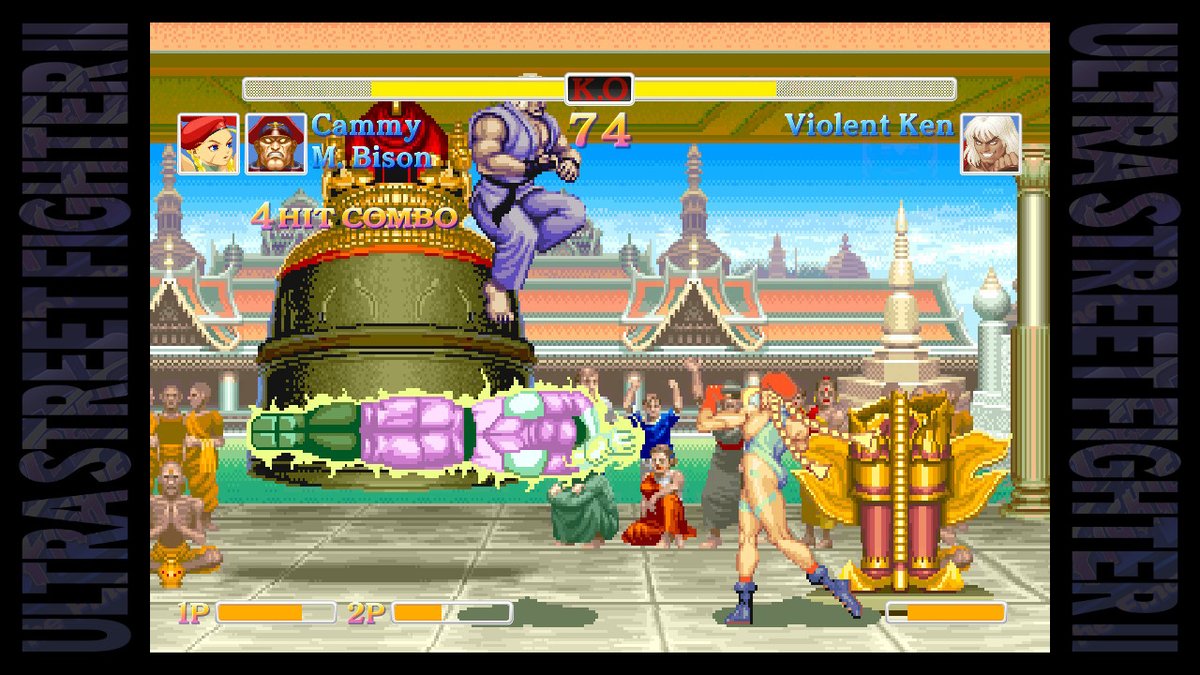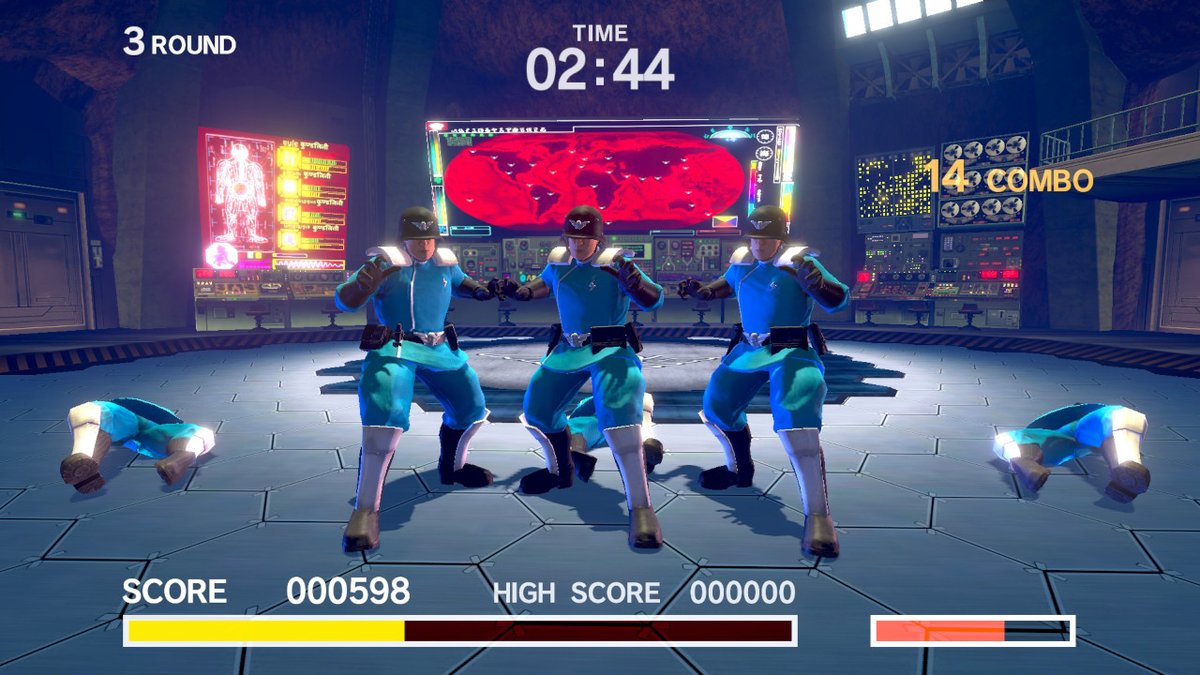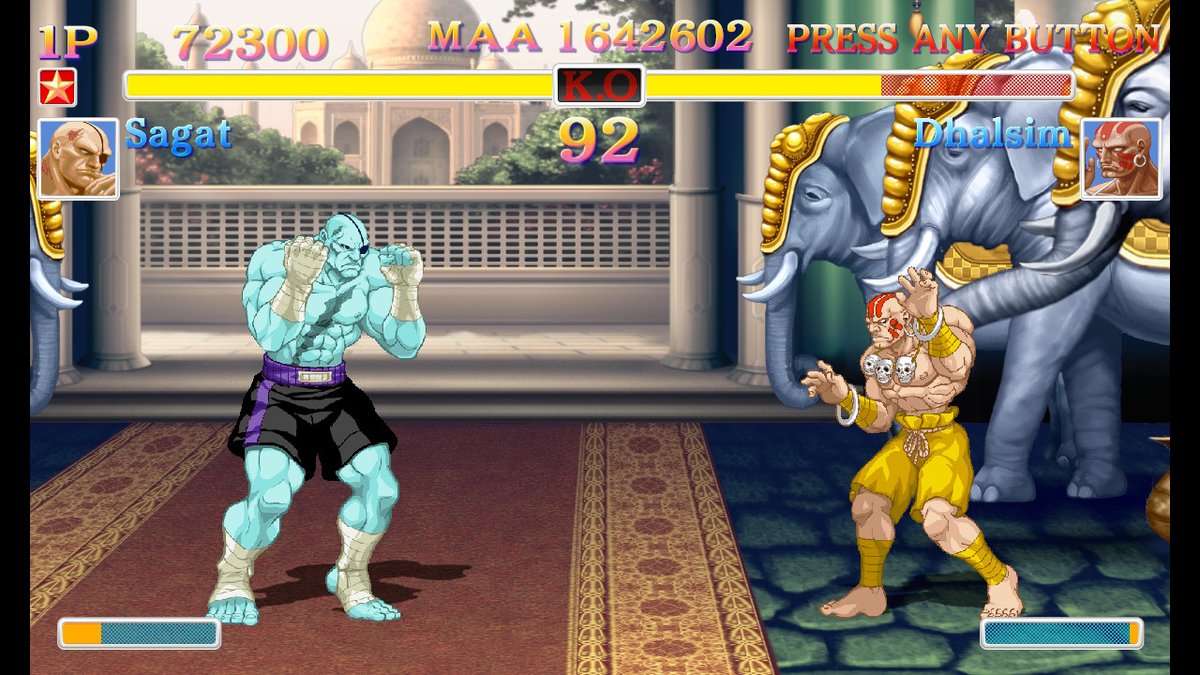Ultra Street Fighter 2 Proves Why Switch Is Great for Fighters
Ultra Street Fighter 2 is a fun take on a classic fighting game that feels right at home on the Nintendo Switch.

Playing Street Fighter on a Nintendo system finally feels great again.
If you're like me, you got hooked on Capcom's genre-defining fighting-game series with Street Fighter II on the Super Nintendo in the early ‘90s. The series went on to skyrocket with bigger and (sometimes) better sequels, but Nintendo fans were left mostly with shoddy ports and awkward handheld iterations. That changes with Ultra Street Fighter 2 on the Switch.
This HD reissue of the iconic brawler is a perfect fit for Nintendo's new console. It's fun, it's colorful and it can be enjoyed with a friend, whether you're on the couch or a park bench. While the game suffers from some control issues and isn't terribly engaging for solo players, this $40 package offers a ton of fan service for Street Fighter junkies who want to get a fight going at a moment's notice.
What's Old Is New
Ultra Street Fighter 2 still feels like Street Fighter 2, and that's a good thing. Taking the core gameplay from Super Street Fighter 2 Turbo and the slick graphical style of the game's 2008 HD remake, this Switch remix will feel immediately comfortable to anyone who's thrown a fireball, dragon punch or hurricane kick over the past 20 years.

New to Ultra Street Fighter 2 are Evil Ryu and Violent Ken, who are angrier, more dynamic versions of Street Fighter's two most iconic characters. Evil Ryu borrows most of his attacks from demonic boss character Akuma, while Violent Ken has a dizzying dash move that's great for confusing your opponent. They might not seem like huge additions on the surface, but when you combine them with new mechanics, such as the ability to break throws, Street Fighter 2 suddenly becomes a new experience for folks who have been playing competitively for decades.
Ultra Street Fighter 2 is beautiful -- the new HD art style really pops on the Switch's display, and looks even better on a TV. If you're feeling nostalgic, you can revert back to Street Fighter 2's original 16-bit graphics, which still look crisp today.
Joys and Cons
Capcom's classic fighter feels better than I expected it to on the Switch's Joy-Cons, both in handheld mode and when connected to a grip. However, since the Joy-Cons lack a traditional d-pad (which is ideal for fighting games), I was forced to use the analog stick, or deal with the set of directional buttons beneath it.
Get instant access to breaking news, the hottest reviews, great deals and helpful tips.

I eventually got comfortable doing special moves and simple combos with the Joy-Con analog stick, but it occasionally caused some accidental inputs and missed jumps. The directional buttons are more precise, but just feel incredibly awkward and uncomfortable. The game is far from unplayable using the Switch's default controllers, but you'll want to spring for a $60 Pro Controller if you're looking to get serious.
You can alleviate the Switch's shortcomings by using the game's "Lite" controls, which let you map special moves to a single button -- or even to the system's touch screen. This all worked as advertised, though having to stop moving my character to tap the left side of the touch screen for certain attacks felt counterintuitive.
There was something magical about being able to set up a casual multiplayer Street Fighter session anywhere I went.
However, I didn't mind these control issues nearly as much after I took into consideration Ultra Street Fighter 2's greatest feature: instant two-player matches you can enjoy anywhere.

After plopping my Switch down in our lab and removing the two Joy-Cons, I was trading fireballs and spin kicks with a friend within seconds. Each tiny, standalone Joy-Con worked surprisingly well as a mini-controller, and it wasn't long before my opponent and I were landing combos and hurling special moves at each other.
Was it as precise as using a proper gamepad? Of course not. But there was something magical about being able to set up a casual multiplayer Street Fighter session anywhere I went, and I look forward to having impromptu matches at bars, parties and airports for months to come.
Bonus Round
Street Fighter's Switch debut is packed with lots of neat little touches. I had a ton of fun using the Color Editor to give my characters blue skin and vibrant purple outfits, and appreciated being able to swap between a variety of slick-looking wallpapers for the game's main menu. There's also a staggeringly comprehensive in-game art book, which lets you flip through 250-plus pages of gorgeous illustrations from every era of Street Fighter.

The new Buddy Battle mode has you team up with a friend or the CPU for a handful of 2-on-1 fights. It's good fun, but feels a bit half-baked because it ends so quickly. I was more impressed by the bonus Way of the Hado mode, which lets you hurl fireballs and perform uppercuts using real-life motion gestures. It's completely silly and one of my favorite parts of the entire package.
I can't say I didn't geek out a bit the first time I launched a hadouken using my actual hands.
The motion tracking felt a bit imprecise (I still can't properly perform a hurricane kick), but as a hardcore Street Fighter nerd, I can't say I didn't geek out a bit the first time I launched a hadouken using my actual hands. The mode is deeper than I expected it to be -- you can play through set levels or endless waves of enemies at multiple difficulties, and can even upgrade your stats between rounds. It's a nice way to work up a sweat playing Street Fighter, and its silly arm-flailing gameplay could be a hit at parties.
Bottom Line
Is Ultra Street Fighter 2 a great version of Street Fighter? Absolutely. Is it worth $40? That's harder to say.
Despite a healthy amount of modes, Ultra Street Fighter 2 is primarily a game meant to be enjoyed with other people. A lot of the game's longevity hinges on its online play -- a feature that I haven't had a chance to test pre-release, and one that could make or break things for serious players.

That said, between its polished core gameplay, neat bonus features and surprisingly entertaining motion-control mode, Ultra Street Fighter 2 feels like a more focused and complete fighting game than Capcom's flagship Street Fighter V, which launched last year with online problems and a severe lack of offline content.
Ultra Street Fighter 2 might not be the eSports powerhouse that SFV is, but who cares? It’s an excellent take on a classic Street Fighter that feels right at home on the Switch, and evokes many of the same joys that it did 20 years ago on the Super Nintendo.
Photos: Capcom / Tom's Guide
Mike Andronico is Senior Writer at CNNUnderscored. He was formerly Managing Editor at Tom's Guide, where he wrote extensively on gaming, as well as running the show on the news front. When not at work, you can usually catch him playing Street Fighter, devouring Twitch streams and trying to convince people that Hawkeye is the best Avenger.

